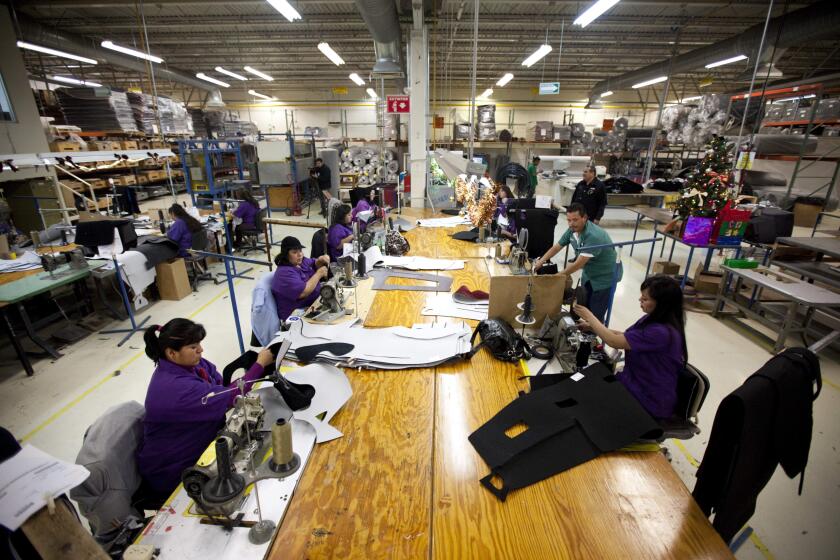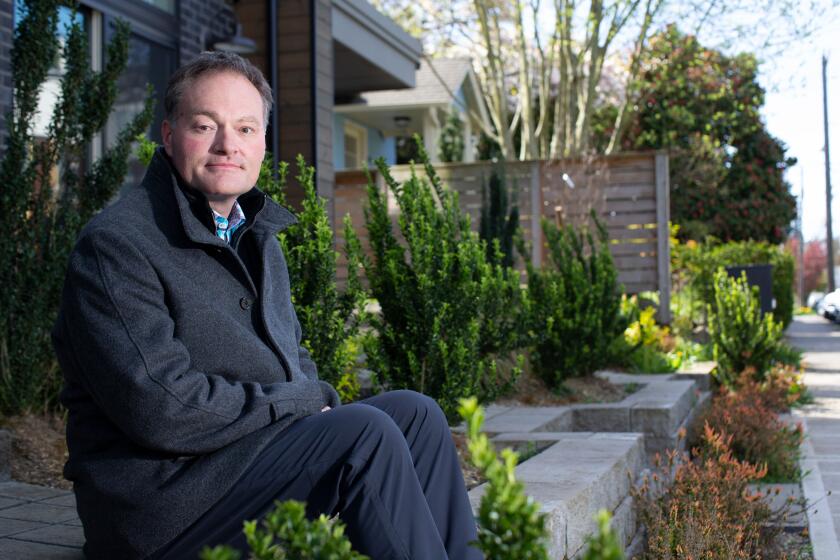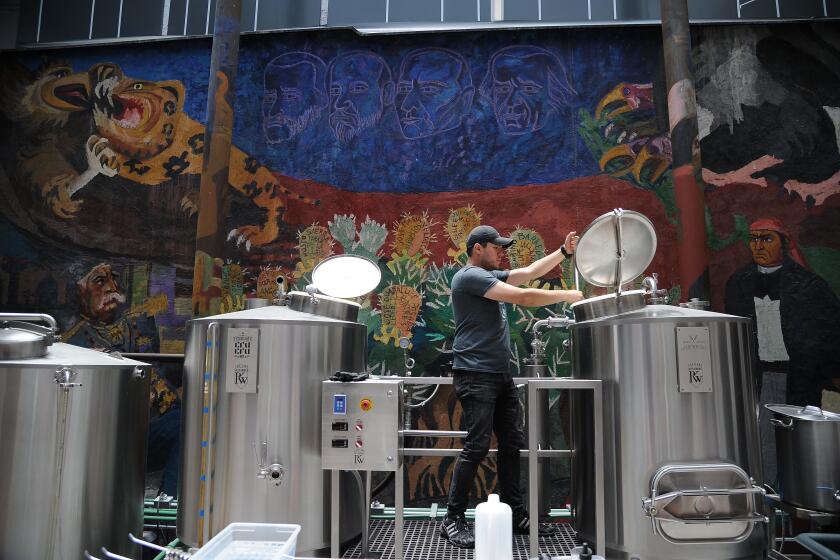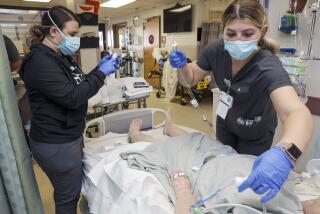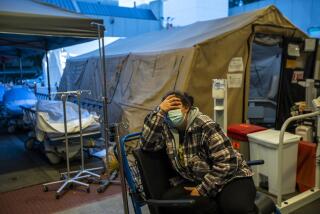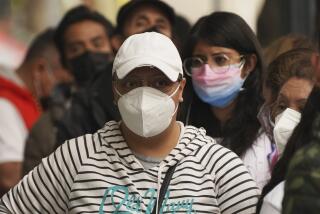‘Like a time bomb’: Tijuana’s hospitals under pressure and understaffed as coronavirus spreads
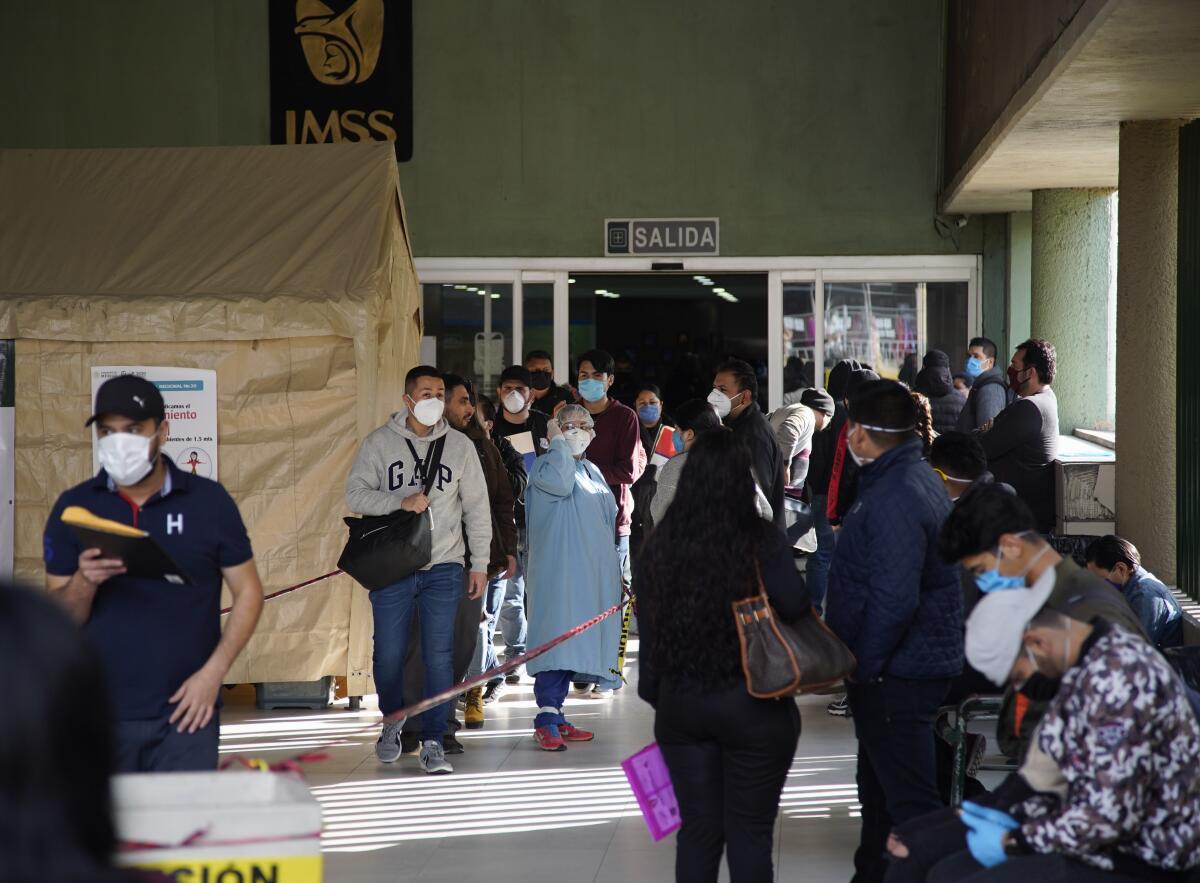
TIJUANA — As Mexico faces rising numbers of coronavirus cases, Tijuana’s Clinica 20 is just one more public hospital fighting on the front lines. The five-story facility in central Tijuana has too few doctors, limited equipment and the expectation that the patient load will only grow.
“From the time we got our first patient until we were full, it took only 10 days,” said a doctor at Clinica 20. In the coronavirus ward, “many of the doctors and nurses are sick or on leave, and we have only about half the staff. Those who are there are working extremely hard, because there are few doctors and many patients with COVID-19.”
Three doctors at Clinica 20 agreed to talk anonymously about their working conditions in the busy hospital. They said they had been forbidden to speak publicly and risked losing their jobs if they were identified.
Each day, seven to nine suspected coronavirus patients at Clinica 20 are dying, with a similar number recovering enough to be sent home, one doctor said. By the time test results are returned, the patients often are already gone. “We weren’t ready at the hospital for the situation to turn so serious in such little time,” he said.
Clinica 20, officially called Regional General Hospital No. 20, is part of a network of hospitals funded through Mexico’s social security institute, known as IMSS. Both of Tijuana’s social security hospitals have been designated to treat coronavirus patients. A third public hospital — Tijuana’s General Hospital — is also treating patients. It is operated by the state but supported with federal funds.
About 55 coronavirus patients were hospitalized at Clinica 20 last week. It has barely enough ventilators but has been able to cope, mainly because of the quick turnover of patients. Staff members who interact with coronavirus patients are getting protective equipment as stipulated by the World Health Organization. However, a doctor said, “The goggles are not the most adequate and the robes and gowns are not very high quality.”
A few miles away, the staff at General Hospital is also dealing with the sudden onslaught of coronavirus patients. Dr. Pablo Villlaseñor, whose training is in rheumatology, said he turned to YouTube for guidance on how to safely put on and remove his disposable personal protective equipment when the first patients arrived in mid-March.
Federal health ministry figures show Baja California as one of the states with the highest number of confirmed cases. By Friday, Tijuana had counted 42 deaths, out of 72 statewide, according to the state’s health ministry.
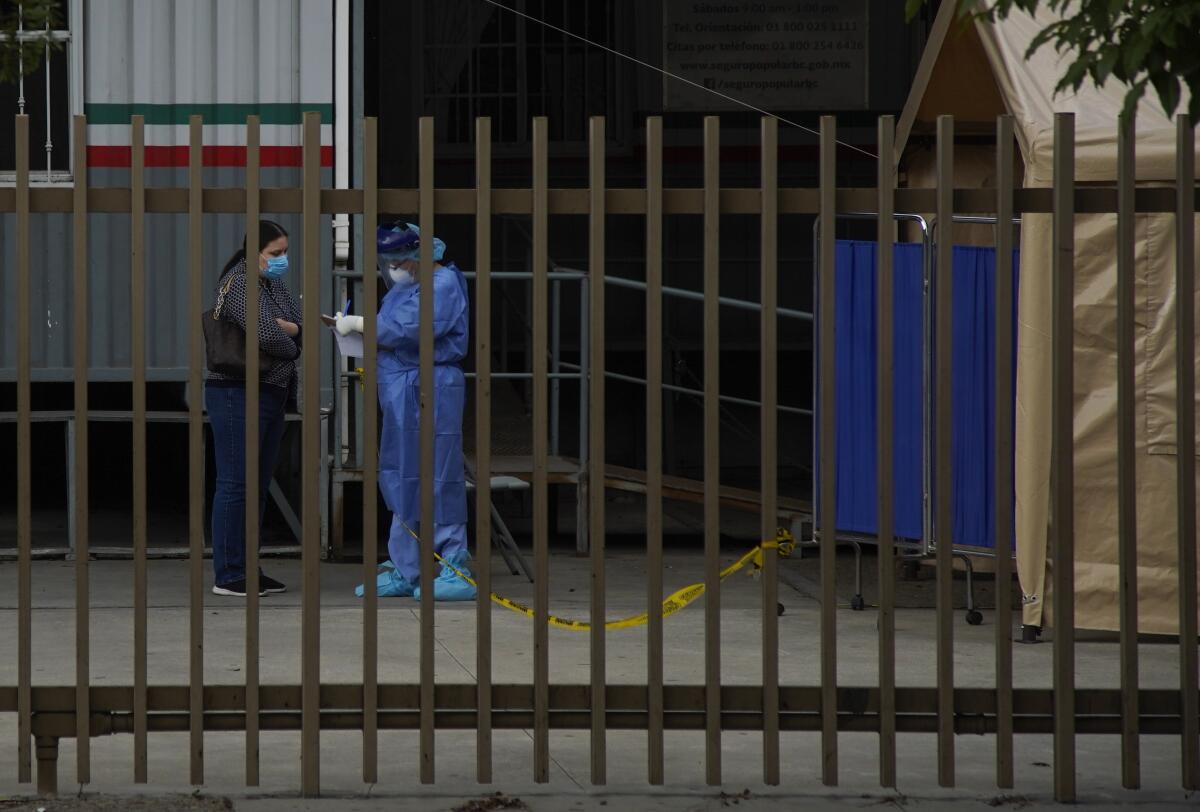
“This is not the worst it’s going to get,” said Dr. Clemente Zúñiga, an internist at General Hospital.
Zúñiga became infected three weeks ago after treating some of the hospital’s first coronavirus patients and had to be hospitalized for seven days. He is now at home, preparing to return to work.
“It is very tense to work in the ward right now; we have a great team, and that’s why we have survived,” he said. “We know in two weeks we are going to have our hands full.”
Many of Mexico’s border factories are flouting orders to suspend operations, worsening the spread of the coronavirus.
Tijuana’s public hospitals are part of the complex and fragmented system that provides healthcare to a majority of Mexicans. The system has long suffered limitations, but the coronavirus pandemic has made its weaknesses increasingly apparent.
Over the years, it’s a situation that’s become “just like a time bomb,” said Arturo Vargas Bustamante, a UCLA professor who has studied Mexico’s healthcare system. “This pandemic revealed chronic under-investment in the public health system.”
Some of those most vulnerable to the pandemic are the urban poor. Rodolfo de la Torre, an analyst at the Mexico City-based think tank Centro de Estudios Espinosa Yglesias said that, at some hospitals, the families of patients often have to supply medicine, bandages and other materials.
The system’s underfunding “is an inherited problem, but it’s a problem that this administration has not responded to,” De la Torre said.
Clinica 20 has been in the spotlight across Mexico since a popular film and TV star, Eugenio Derbez, took to social media last week to call attention to the plight of the hospital’s doctors. The actor’s claim that medical staff lacked personal protective equipment such as goggles and N95 face masks generated a fierce social media rebuttal from a high-ranking administrator. But Baja California’s governor, Jaime Bonilla, sided with Derbez and said that doctors in the state’s social security hospitals were “dropping like flies.”
Top officials with IMSS flew from Mexico City to Tijuana last week to conduct an inspection. They reported that 23 workers at the hospital had been infected with the virus, according to Reforma newspaper — including four in administrative positions. Epidemiologists reported that the contagion came both from inside and outside the hospital.
But it’s unclear if those numbers were confirmed with testing. Due to a shortage of tests, only hospitalized patients are being tested, according to one doctor. Meanwhile, doctors with symptoms aren’t being routinely tested and instead are sent home for 14 days of quarantine. “In my opinion, it’s a way of hiding information, because the hospital does not want it known that many physicians are getting infected in this very hospital,” the doctor said.
A Seattle emergency-room doctor contracted COVID-19 while treating patients infected by coronavirus. He owes his life to physicians who used an experimental treatment.
Clinica 20 is a 200-bed regional hospital that has served working and middle-class Tijuana residents for more than five decades. It sits off the Cinco y Diez intersection, a busy transportation hub for all corners of this city of 1.8 million residents.
A block from the hospital on Friday morning, many people wore face masks as they rushed to and from bus stops and in and out of stores despite the city’s stay-at-home recommendations.
Directly outside the facility, paramedics dressed in full hazmat suits disinfected an ambulance. Heavily protected staff directed lines of people outside the walk-in clinic, where some of those waiting were coughing and wearing masks.
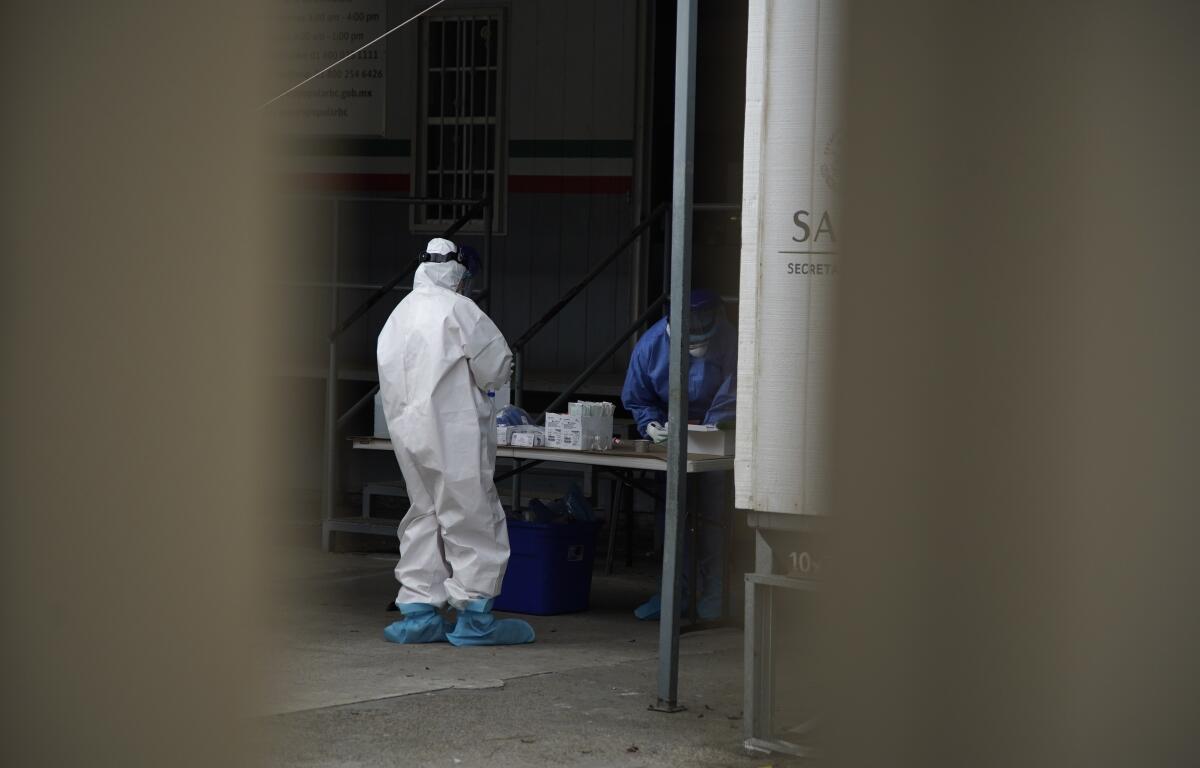
Inside the hospital, anxiety has been mounting among many staff members, who complain they are not receiving N95 face masks and other protective equipment unless they are interacting directly with the suspected COVID-19 patients. Doctors say the IMSS is adhering to World Health Organization guidelines on personal protective equipment, but that is small comfort to other staff members.
“You never know if it’s going to be your turn,” a doctor said. “Someone who comes in with non-respiratory symptoms can be finally diagnosed with pneumonia.”
A rush to buy protective equipment brought crowds of medical workers last week to a supply company in east Tijuana. Some two dozen people joined a queue, waiting for the opening of the warehouse — only to learn that supplies were sold out.
Public hospital workers said they were prepared to spend their own money for items such as face shields, goggles and coveralls. One nurse who is receiving protective gear when she is assigned to the coronavirus ward says one suit of gear isn’t enough for an eight-hour shift. “Once you put it on, you cannot get a drink of water, you cannot go to the bathroom,” the nurse said.
Perhaps one of the most heated debates in Mexico during the coronavirus pandemic is whether beer should be considered ‘essential’ during the lockdown.
Growing numbers of Tijuana residents have been stepping forward to raise funds and gather donations for the beleaguered medical staffs. There have been cross-border efforts as well. The key will be coordinating among the different donors and hospitals, said Anne McEnany, president and CEO of the National City, Calif.-based International Community Foundation.
“We want to make sure that philanthropy is filling gaps that government is not covering, as opposed to trying to do everything,” McEnany said.
Doctors say they are grateful for the donations. But they say the public can’t fill their most pressing need: having enough staffers to work with the growing numbers of COVID-19 patients.
At General Hospital, 12 doctors have so far tested positive for the coronavirus, said Dr. Villaseñor.
The staff shortage has meant that, on some shifts, no doctors are present on the coronavirus floor. The “patients are extremely ill, a great proportion of them are on ventilators, and under the effects of sedation,” Villaseñor said. “This means they are extremely vulnerable.”
Sandra Dibble and Wendy Fry write for the San Diego Union-Tribune. Union-Tribune staff writer Alexandra Mendoza contributed to this report.
More to Read
Sign up for Essential California
The most important California stories and recommendations in your inbox every morning.
You may occasionally receive promotional content from the Los Angeles Times.
